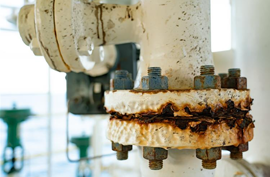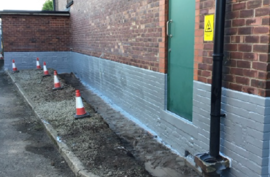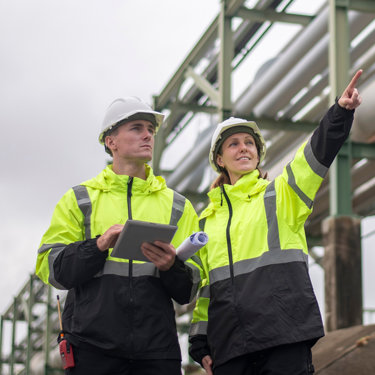3 steps to reduce reliance on combined sewer overflows and increase network capacity
Published: 11 March 2022
By: Matthew Humphreys, Utilities Sector Manager
The use of combined sewer overflows (also known as CSOs) has placed water companies in the firing line of regulators (such as the Environment Agency) and the public.
Combined sewer overflows reduce the risk of sewer systems backing up during heavy rainfall, which could flood homes and businesses with raw sewage. Instead, combined sewer systems discharge both rainwater and wastewater to a water body, such as a river or the sea. But the water industry faces intense pressure to scale back reliance on combined sewer overflows and implement a smarter, more sustainable approach to sewage treatment and management.
However, the current asset management plan (AMP) period does not allow for capital spending on increased storm tank capacity through in-line or off-line retention storage. So, water companies need to get creative.
Here are 3 steps to discover cost-saving solutions to increase the capacity of your sewer network, cut use of combined sewer overflows, and extend asset life. All without the red tape of CapEx requirements.
Step 1: Pinpoint weak spots in your sewer network
Use of a combined sewer overflow is the result of an overburdened network.
Using cutting-edge techniques, an experienced environmental consultant can highlight the underlying risks of pollution incidents and identify hidden drainage problems that could lead to costly discharges from combined sewer overflows.
CCTV surveys
CCTV asset management surveys examine sewer pipes, sewer diversions, culverts, and tunnels up to 500 metres long between access chambers. The highly accurate inspections diagnose existing or emerging structural and service concerns, including collapses, scale build-up, grease, cracks or displaced pipes, and root intrusion.
Syphon surveys
Syphon blockages can limit a pipe’s hydraulic capacity, overloading combined sewer overflows and risking large-scale sewage releases.
Regular maintenance is crucial, starting with a comprehensive asset review to evaluate syphon condition, access routes, and hazards. Qualified confined space entry crews determine ideal isolation, drainage, and cleaning techniques, while CCTV reveals grease or debris build-up and any structural issues.
Environmental monitoring
Environmental monitoring services, such as biological riverbed surveys and upstream catchment surveys, accurately classify the status of storm overflows.
Coupled with the installation of event duration monitors, these specialist services use cumulative data to identify worst-offending assets and prioritise improvement work.
Step 2: Use tech to tailor your combined sewer overflow management
A detailed outline of your infrastructure helps you manage upgrades, budgets, and resources.
An OS19X-qualified team can map your underground assets, defining present and future targets for repair, maintenance, and monitoring.
Sonar tracing services
When a CCTV survey uncovers a drainage problem, sonar tracing equipment accurately locates the defective or collapsed sewer, indicating its line, depth, and direction. Your environmental consultant then uses this data to determine the most suitable excavation point and repair method.
Step 3: Maximise existing assets in your water infrastructure
With in-depth knowledge of your sewer network, an environmental professional will plot the route back to optimum performance. This could involve instant fixes to restore pipe capacity or maintenance plans across your estate for ongoing compliance.
High-pressure jetting
High-pressure water jetting effectively clears root intrusion, silt build-up, concrete deposits, bricks, and grout.
Large-scale blockages are removed by powerful deep-lift vacuum tankers, while efficient recyclers treat and reuse water for jet cleaning.
Drainage repairs and planned preventative maintenance (PPM)
In the short term, a fixed-cost network cleaning and servicing programme controls pollution threats, using purpose-built remediation equipment for sewerage, effluent, and surface water.
Down the line, proactive repairs and routine maintenance extend the longevity of your assets.
Improve combined sewer overflow management with strategic thinking
Reducing reliance on combined sewer overflows begins with a deep understanding of your sewer network’s strengths and weaknesses. Aim for small, strategic investments that boost capacity and buy back precious years of asset life – with no capital expenditure needed.
More from our Knowledge Hub
 Insights
InsightsEarth Day 2025: Enabling a sustainable future while supporting today’s infrastructure in an evolving energy landscape
 Insights
InsightsMitigating climate change risks through planned preventive maintenance
 Insights
InsightsProtective coatings: Safeguarding infrastructure against climate change
 Insights
InsightsDelivering the Water (Special Measures) Act: Supporting compliance and innovation
Environmental compliance today, creating a sustainable tomorrow
Helping you reduce risk to the environment and your operation by managing assets compliantly while achieving commercial, ESG, and net-zero goals.
Contact our experts
